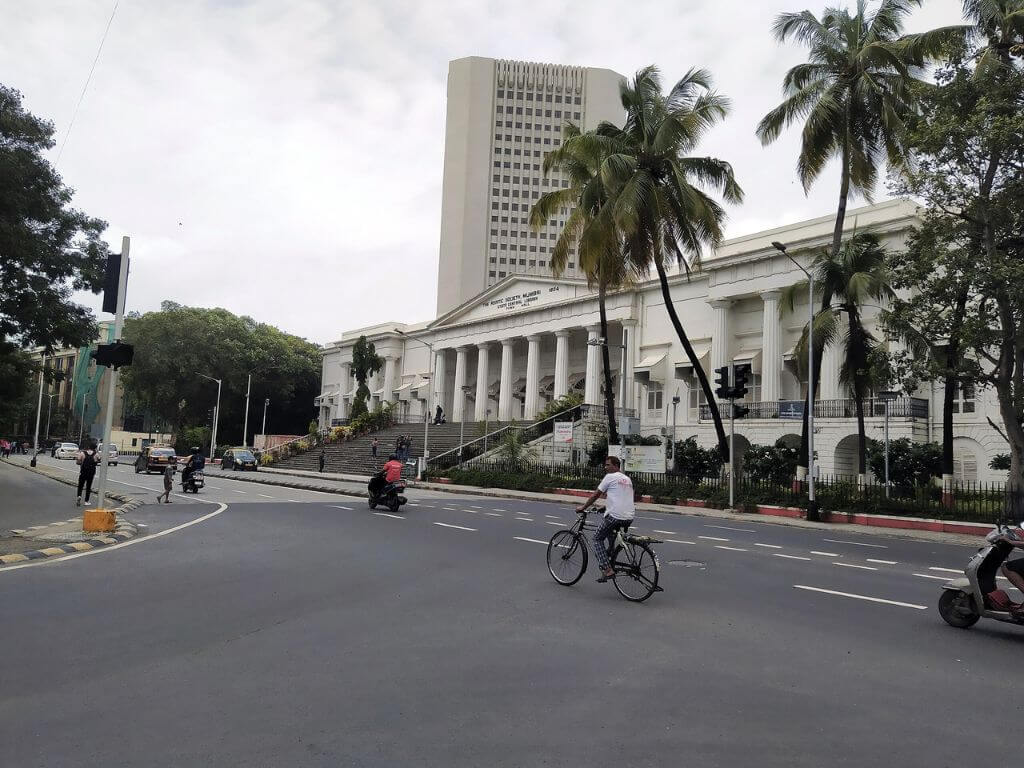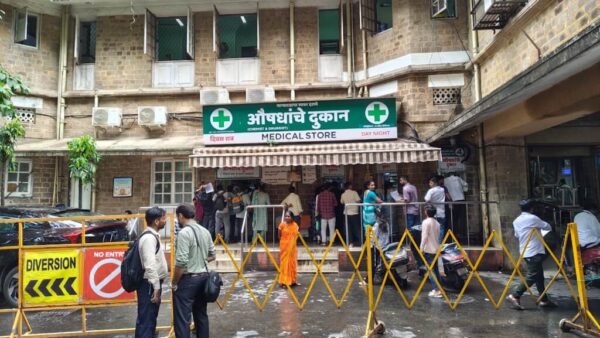I love Mumbai. I have always loved Mumbai. Despite the current state of affairs and appalling quality of life in the city, a part of me is constantly looking for something to hold on to, to keep that hope kindled. I was lucky enough to have grown up in a neighbourhood where we would take the bus to school, walk to our nearby after-school classes and friends’ homes, access open spaces in the form of parks and playgrounds, cultural amenities such as music and theatre institutes – all within a 10-minute journey from home.
As I grew, my interest in the city’s landscape grew immensely, in its streets, houses and neighbourhoods – each with its distinct characteristics, the architecture of the days gone by and of the days to come, and last but not the least, its people. This is what truly excites me. Through the multiple hardships, daily struggles and inexcusable standards of living, the city thrives.
There is no better way to experience these unique aspects than on a bicycle. Once on the saddle, all the senses are heightened. While riding in and through the city, your body and the cycle are one with the mind in a state of absolute concentration or deep meditation. Cycling to explore the city and its neighbourhoods has become a delightful and soul-uplifting experience, not to mention that it is much faster than walking the distance.
Cycling started as a passion, one that I nurtured to keep in touch with the city’s raw elements, and has become a primary mode of exercise as well. Over the years, I have become more sensitive towards the issues of the city as a well-wisher and as an architect-urban designer who craves for sensitive design endeavours in its landscape. While on the cycle, I process and see the city very differently than when I am in a car or a bus. The way the city moves, the way it functions, the way it is growing and where it is heading are taken in while seeing, smelling and feeling the road beneath the wheels.
Cycling also evokes an inherent sense of camaraderie with others who cycle – shedding elitist associations of how one must aspire to move in the city, typically in expensive cars, each bigger and bolder than the next. These feelings of community could potentially drive home the concepts of cycling lanes, bike share models and some form of ‘cycling credits’ one day – if we rally for them. Cycling is, naturally, the mode of transport that must be most encouraged, especially in a city where last-mile connectivity has never been comprehensively looked at. Beyond cycling as a passion, it can become the primary climate-friendly mode of covering short distances for millions of people.[1] [2] The ease of access that common people have to a cycle is comforting and, to my mind, could help make it the preferred choice of how masses move in Mumbai.
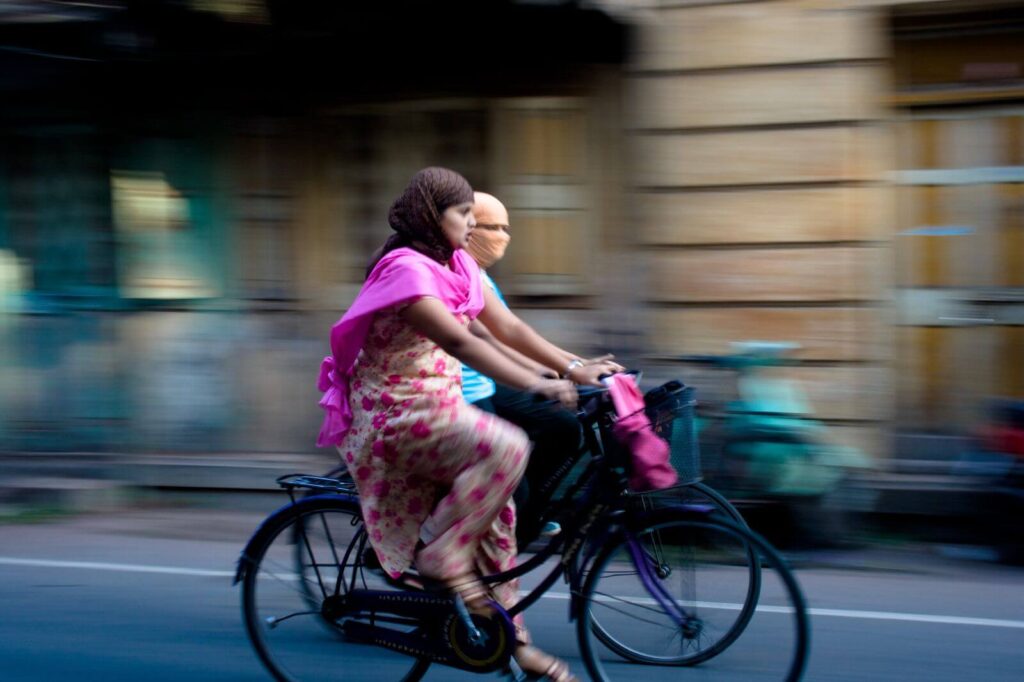
Photo: Wikimedia Commons
Impediments to promoting a cycling culture
The hours spent cycling is when the issues that Mumbaikars truly face while using streets and roads, especially to walk, become glaringly evident. According to the Comprehensive Mobility Plan for Greater Mumbai, 2016 (CMP),[3] a majority of the population – about 46 percent – walk for various purposes and the rest use other modes such as the suburban train, bus, metro or auto rickshaws. Only about 10.9 percent use private modes of transport.
In Greater Mumbai, 51 percent of the total trips are walk trips and 72.5 percent trips for educational purposes are on foot. In addition, nearly 60 percent of the public transport journeys necessarily start and end as walking trips.[4] These are also considerably short; more than 80 percent of the walk trips to workplaces or schools are less than 15 minutes. The CMP states its vision for the city’s “future traffic and transportation as a seamless, integrated system, in which commuters can make their journeys throughout the city safely and conveniently by various modes of transport, with strong emphasis towards Non-Motorised Transport (NMT) i.e. pedestrian and cycle modes, traffic management measures and public transport systems”.
This is good intent but the proportion of the city’s budgets and physical plans[5] that deal with improving the non-motorised modes of transport are hardly noteworthy, to say the least. There have been near-zero efforts for comprehensive structural solutions to integrate cycling into the city’s landscape and its transport network.
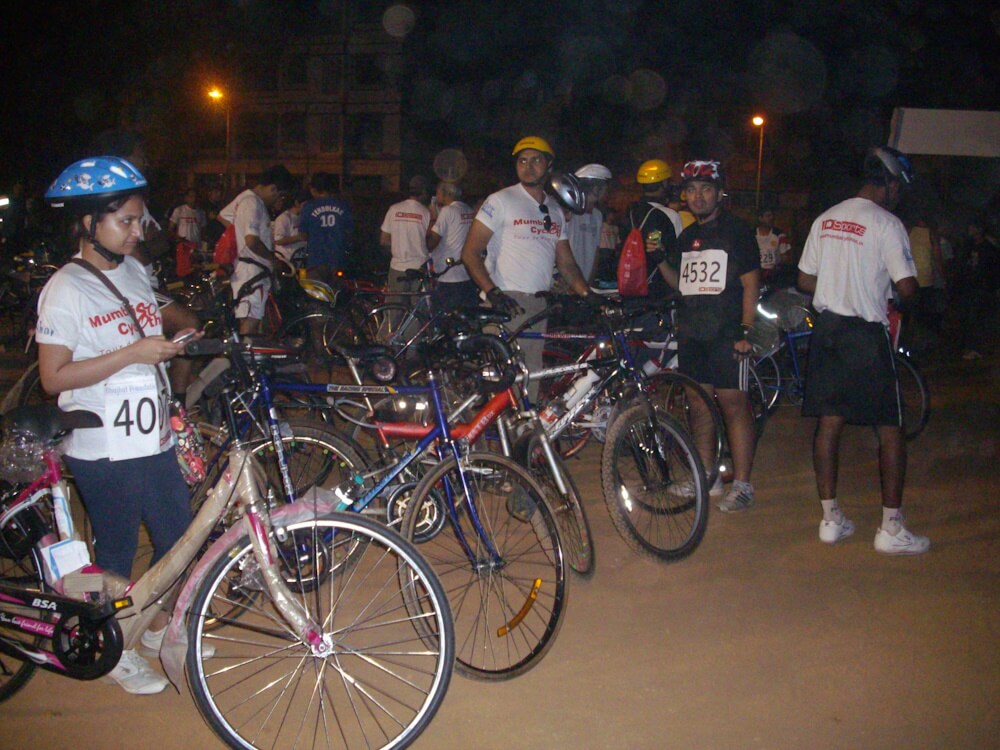
Photo: Rudolph.A.Furtado/ Wikimedia Commons
Deplorable condition of streets and roads
Presently, several conditions discourage pedestrian movement. These include several permanent and semi-permanent structures located along edges of the right of way of streets, haphazard parking of vehicles, absence of footpaths in most places, discontinuous footpaths with changing levels at every property entrance and intersections. Undesirable and unsafe pedestrian walk environments force commuters to switch to other mechanised modes.
Such conditions impact cyclists and discourage the use of cycles as well. In the absence of dedicated cycling tracks, cyclists are forced to share the right of way with speeding vehicles that include cars, buses as well as trucks – most of which show complete disregard to pedestrians and cyclists. Pedestrians account for 47% of Mumbai’s road accident deaths. Cyclists are not far behind. As per the Maharashtra Economic Survey Report 2022-23,[6] as many as 272 persons lost their lives and 1,620 were injured in 1,773 accidents in Mumbai in 2022.
Poor road conditions such as potholes and dangerous road junctions greatly deter the confidence of cyclists for a safe and stress-free journey.
Lack of political will
The non-motorised modes like cycling seem to be side-lined because they are not capital-intensive or revenue-generating projects. Government initiatives remain in nascent stages of planning and on creating false narratives of progressive thinking, often floated to gain political mileage. The current mobility infrastructure momentum backs large projects – almost all of them unabashedly automobile-centric.
The famed Coastal Road, the Mumbai Trans Harbour Link and the 16-plus flyovers planned in the city aim to ease vehicle congestion and ease traffic flow. From multiple global examples,[7] [8] [9] [10] it is clear that more roads or bridges do not solve these issues. Studies in Los Angeles have shown that there is a direct correlation between the percentage increase of roads and percentage increase in vehicles at the same time. Also, these big-ticket projects fail to address mobility issues at the scale of neighbourhoods where people move from their homes to access their primary modes of commute – whether public transport such as trains and buses or Intermediate Public Transport modes (auto rickshaws and taxis) as the CMP identifies them.
Policies and investment that support and promote public transit systems of rails, buses and metros can effect a radical change in the number of private car users. With some cars taken off the roads, space is created for cyclists and pedestrians to enjoy a larger as well as safer right of way that they deserve. Additionally, the positive environmental impact of reducing cars on roads are immeasurable[11] [12] and do not need to be elaborated here.
Failure to see plans through
While development plans are being prepared, we need to reference predominant global discussions about the development of equitable and just cities, focussing on transit and mobility. I strongly believe that stress-free and affordable modes of commute are economic enablers. Development plans must be backed by budget provisions to ensure that targets are met and plans see the light of day. Budgets must necessarily be planned for short term as well as long term impacts and NMT modes must see a comprehensive planning approach on both fronts of physical planning and effective financial provisions.
At the national, state and city level, we hear governments talk fleetingly about the UN’s Sustainable Development Goals (SDGs). Tackling climate change is one of the 17 SDGs. But are we on course to achieve these objectives? The Mumbai Climate Action Plan (MCAP), launched in April 2022, outlined measures across various thematic action tracts in specific sectors for climate mitigation and adaptation, one of them being Sustainable Mobility. While identifying Mumbai as the second-most congested city in the world, the MCAP suggests that parking and safer intersections need to be prioritised along with inclusive pedestrian and cycling infrastructure for reduced congestion, commuter safety and better air quality.
Two years on, there is little to celebrate about the MCAP but it is critical to realise its suggestion on the ground if we are to see an integral shift towards cycling as a preferred mode of transit for masses. On the other hand, the CMP-recommended ‘exclusive bus lane corridors’ identified for completion by 2024 are not in place ten years later and show that things rarely go according to ‘plan’. Mumbaikars would affirm that commuting in the city has gone from bad to worse.
Solutions for structural change
There are practical solutions on offer. In 2014, a group of architects, planners, activists and spirited Mumbaikars including myself came together to form the Equal Streets Movement.[13] Its primary objective was to facilitate an ideological shift in how BMC’s engineers view mobility – from roads for cars to streets for people. The group aimed at evolving tactical suggestions for a comprehensive change in how we move in our city. How does one create space for walking and cycling in a city with an inherent lack of space?
Ours was a two-pronged approach: one, weekly events[14] that aimed at popularising the idea of one-way streets for vehicle movement and, two, preparing plans of various neighbourhoods to chart out primary roads which could be transformed into NMT-centric commuting corridors for people to move on foot or cycle to the nearest public transport hub. The events garnered incredible support with more than 20,000 people of all ages showing up every weekend. We revelled in a six-month stint of facilitating one-way traffic movement on two arterial roads – SV Road and Linking Road – while creating a two-lane safe haven for walkers and cyclists.
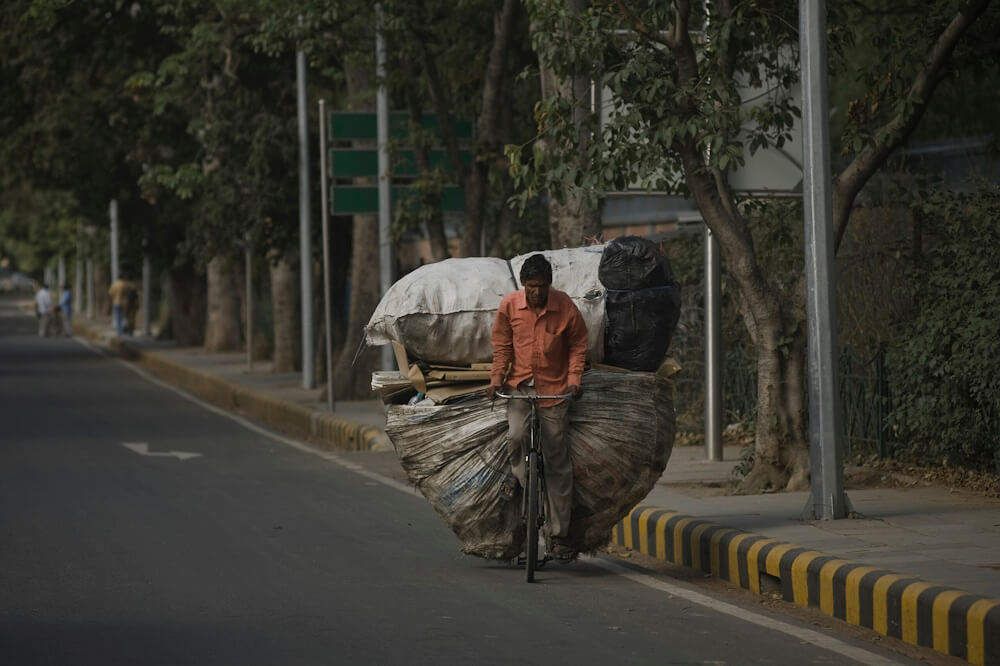
Photo: Wikimedia Commons
On the back of this success, we approached the authorities with sensitively thought-out plans for structural change of our streets. However, we were stone-walled and, soon, shut out completely. The roads lost their weekly respite from cars and Mumbai lost the opportunity to radically transform itself for the benefit of the majority. I found myself similarly in the core planning committee for ‘Pedal Up Mumbai’ that had over 6,000 cycling enthusiasts participate in an event to promote integration of cycling into the formal transit systems of our city. Working with the Mumbai Traffic Police, we were successful in organising a ride across the Bandra-Worli Sea link while closing it down completely for vehicular traffic.
These showed a possible collaborative approach of working with authorities to improve the quality of commute in the city. The idea was to popularise cycling in the minds of decision makers and, in doing so, push for permanent change. There were talks of a pilot project that would look at dedicated cycling lanes from Bandra to Haji Ali, but those fell through soon after the event. In another example, the concrete pathways built along the nullahs in Mumbai can be another untapped asset in promoting cycling within neighbourhoods – and would hugely boost the city’s cycling culture for both work and leisure.
Owing to their natural trajectory, nullahs traverse through neighbourhoods, and thereby become fantastic opportunities to connect short distances by cycle or on foot. We pursued this concept in Juhu along the Irla Nullah[15] but without much success owing to the lack of will of the authorities. The project was initiated in 2015 by the then-MP Javed Akhtar’s MPLAD funds which were pledged for the implementation of the Juhu Vision Plan with its lofty aspirations to connect people and places with natural assets including nullahs. However, during the Covid-19 lockdown, the balance funds were diverted to the PM Cares Fund bringing the project to a grinding halt. Four years later, we are shuffling between the BMC and MHADA as they debate on who should fund the remaining work.
The Ultimate Aspiration
There is no denying Mumbai has serious issues with last-mile connectivity.[16] This void is currently filled by Intermediate Public Transport but these are not sustainable modes in the context of effective climate action. Cycling must be integrated as a means of daily commute – at the neighbourhood level if not long distances. This scalar understanding can make the efforts far more practical and achievable in a shorter period of time.
With growing economies and aspirations of the working class, moving further away from the place of work in search of a better quality of life outside the congested core areas has been a general trend. This naturally fuels the surge of private vehicle ownership and contributes acutely to the current situation of congestion, leading to a vicious cycle. Planning and building the infrastructure needed for cycling is the need of the hour. We need to work towards building sustainable neighbourhoods where live, work, transit and play are all accessed seamlessly and safely, without needing to rely on private means of transport.
An ecosystem that promotes cycling for short and eventually longer commutes will go a long way in facilitating a better, more sustainable, city. This should be driven by the BMC who is responsible for public utilities and infrastructure; it must be held accountable. The process of setting up a dedicated wing that focuses on non-motorised transport must be initiated immediately which can comprehensively look at physical as well as financial planning, is open to a public scrutiny of its plans, and most importantly, implements the suggestions on ground for the benefit of pedestrians and cyclists. This is what Mumbai needs. We, the citizens, need to actively rally for this change.
Samarth Das is an urban designer and architect based in Mumbai. A Graduate with Honors from the Graduate School of Architecture, Planning and Preservation, Columbia University, his work focuses on engaging both public and private sector actors to design and articulate shared spaces within cities that promote participation and interaction amongst people. He has worked for ten years with PKDA Architects on a number of government and private projects in Mumbai and Delhi, and has been a Founding Trustee of the “Equal Streets” Movement and Participatory Urban Design and Development Initiative (PUDDI).
Cover photo: Radosław Botev/Wikimedia Commons

